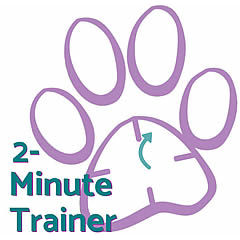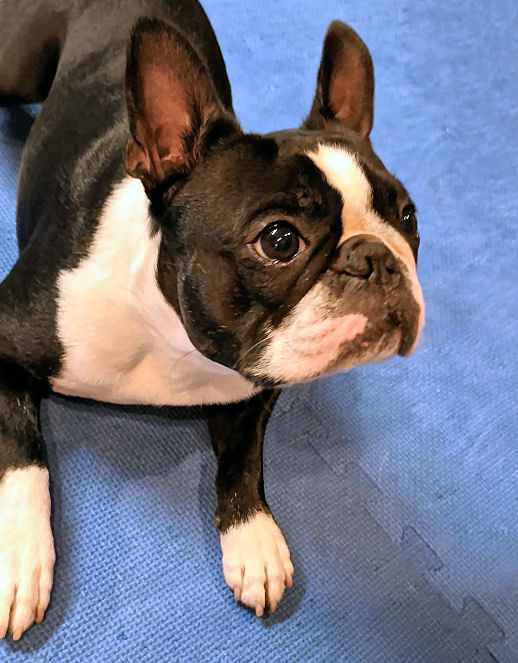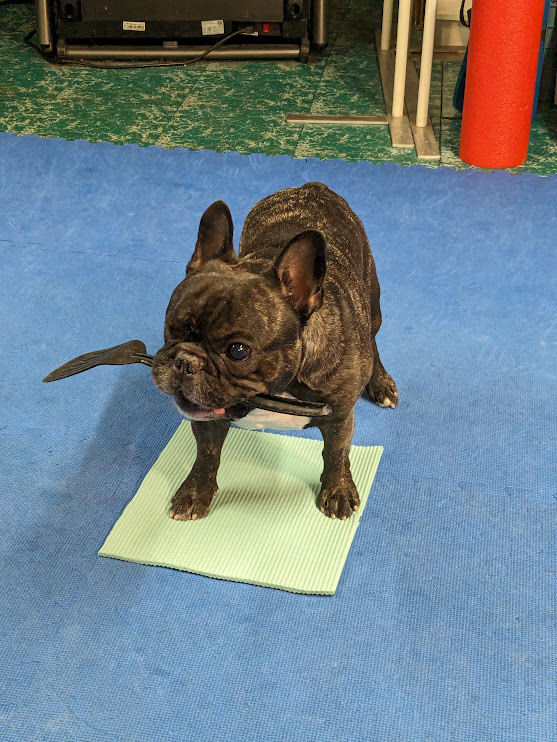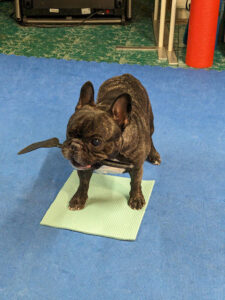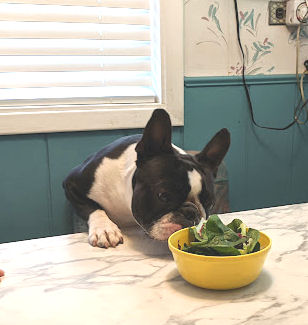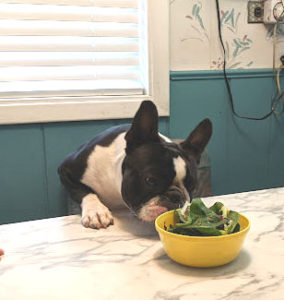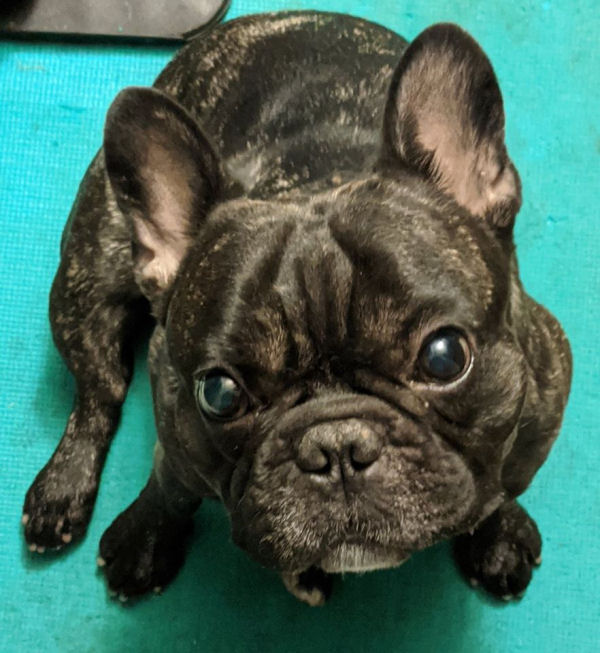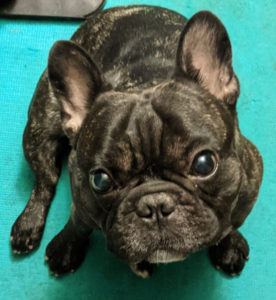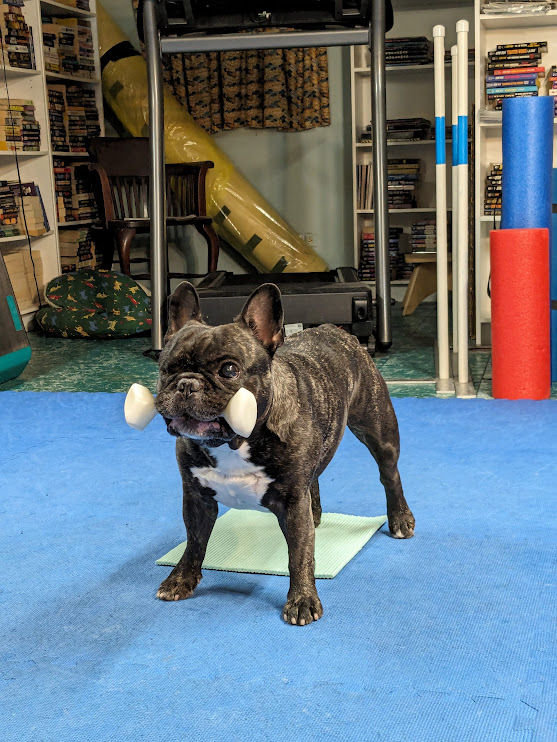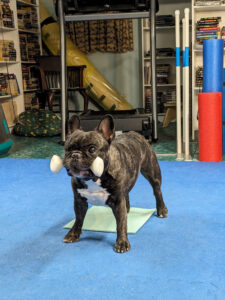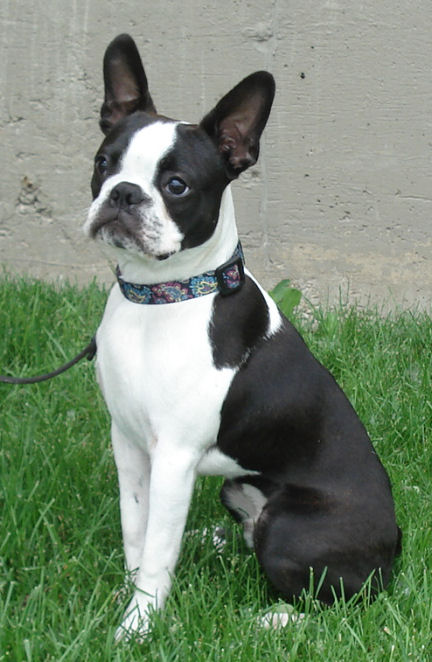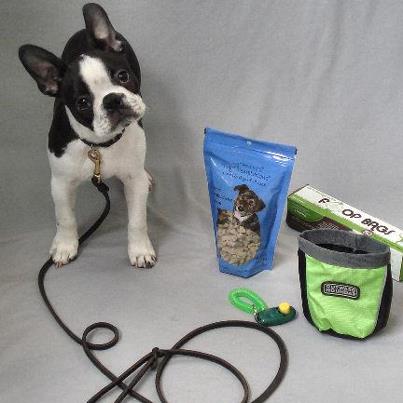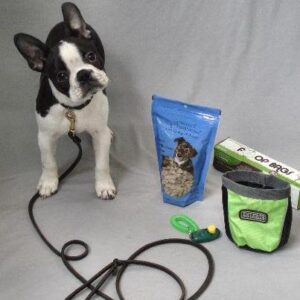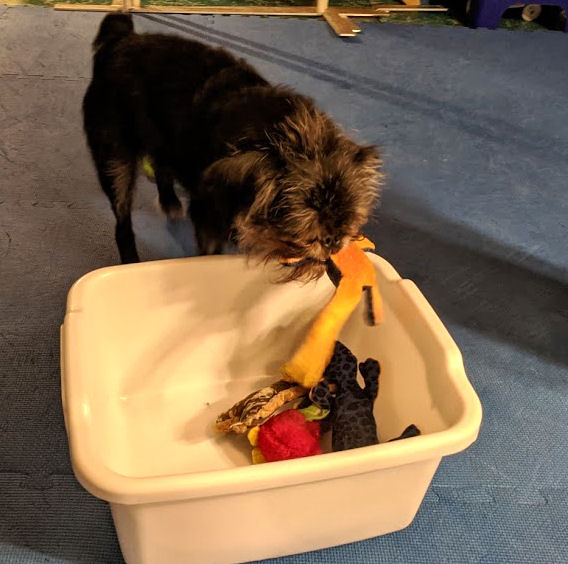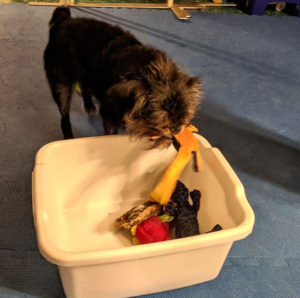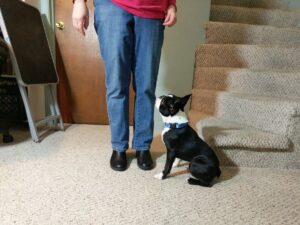Step over your dog? Why? Dogs are a trip hazard. We know, because our cousin shattered her knee cap tripping over her German Shepherd Dog. It was an accident, and those happen to everybody. What made this particular situation worse was that, as she was stepping over the dog on the way, the dog got up. She was actually lucky. It was her dog’s habit to sleep in the hall at the top of the stairway. Our cousin was lucky to break her knee and not her noggin.
Are you wondering what this has to do with dog training? If the dog had been trained to accept being stepped over, brushed by, or even pushed against, she wouldn’t have gotten up and our cousin may not have fallen.
If you’ve played in either Obedience or Rally, your dog is probably accustomed to you walking around them. But if you’ve never taught your dog to let you walk all the way around them, the time has come.
Why do I need that?
Our beginner class students always give us the “Why?” puzzled face when we start teaching “Walk Around Your Dog.” No one thinks they’ll need it. And everyone is pretty surprised when their dog doesn’t let them do it. It’s no big deal to you, so you’ve probably never paid much attention to what your dog does when you walk around them. Almost one hundred percent of the time, dogs will either swivel on their butts to watch you, or stand to keep their face pointed in your direction. Dogs like to know where you are and what you’re doing. All the time.
The scenario we have students imagine is this: You’re making a pasta dinner. Your cooktop is on the opposite side of the kitchen from your sink. The pasta’s done and ready to be drained. And your dog is sitting in the absolute geographic center of the kitchen. If they don’t move, you’ll be okay, there’s plenty of room to walk around them. Unless, of course, they get up and move into the path you were planning to take. If you’re lucky, no boiling water sloshes on anyone. We tend not to be lucky. So we train our dogs to stay put. You may not ever need to step over your dog, but if you do, it’s a handy thing to have trained.
Brush against them
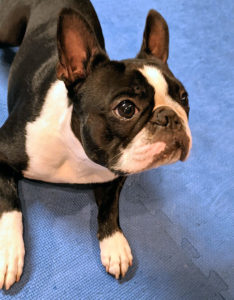
Just as we tend not to be terrifically lucky, we’re also not the most graceful people on the planet. Every so often we move awkwardly, or carry something unwieldy, so we might brush up against our dogs as we pass by them. They need to accept this as normal and not freak out, jump up, and get in the way when it happens.
Next time you practice your “Stay!” with your dog, brush your foot against them when you’re moving. Don’t kick your dog, but let your foot make a bit of contact with your dog’s side, or paw, or butt as you move around. If your dog stays put, reward and do it again. But if they don’t, set it up again and reduce the stress and surprise of the contact. If you brushed the dog’s hind foot, try the front instead so they can clearly see there was nothing to worry about. If you contacted the dog’s hind end, make it a shoulder instead.
Just try it a couple of times, reward the dog and be done for that session.They’ll get used to the incidental touches. Just do it now before you ever actually need it. Gradually increase the pressure of the contact as well as practicing actually stepping over them. Last week we talked about “Middling,” and another thing to practice is to let the side of one foot and then both touch your dog when he’s in the middle.
Everywhere, every position
If your dog aces “Walk Around Your Dog” when lying down, move on to the “Sit!” and the “Stand!” As always, do it in different places so your dog truly learns what it means. And every once in a while actually step over your dog.
It may seem like a little thing. And it is. Until you’re heading to the bathroom at 2 a.m. and your dog is lying in your path. In this case an ounce of prevention would have prevented a very painful pound of cure.
